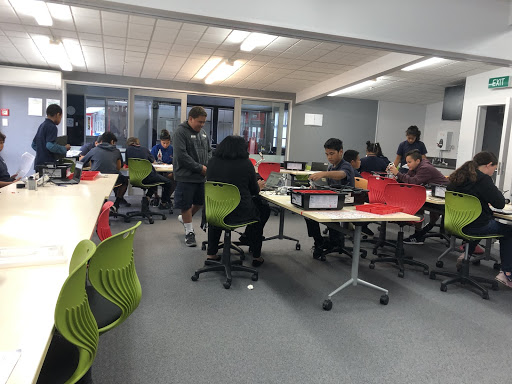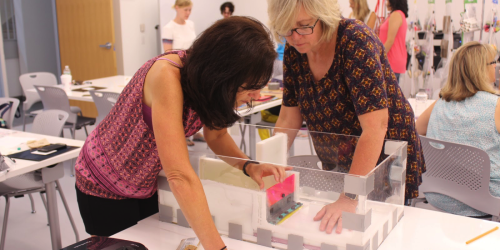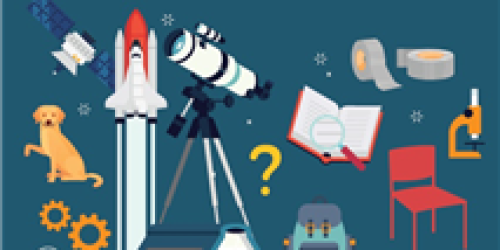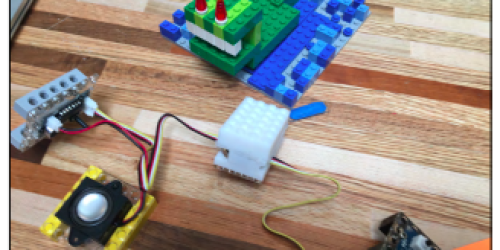by Sara Willner-Giwerc, Doctoral Student in Mechanical Engineering
Tufts Center for Engineering Education and Outreach’s (CEEO) doctoral student Sara Willner-Giwerc spent May 2019 in New Zealand as a visiting researcher at the University of Auckland. She spent several weeks helping teachers and students with LEGO robotics and also running a LEGO Education conference with Professor Chris Rogers. Please read below to learn more about Sara’s work and her trip from her perspective.
As part of my work at the CEEO, I (Sara Willner-Giwerc) was given the amazing opportunity to be a visiting researcher at the University of Auckland for the month of May 2019. The goal of my trip was to talk with University of Auckland students and professors about outreach models and new engineering pedagogies, learn more about the New Zealand Educational system, and run a LEGO Engineering conference for local teachers.
While I was visiting, I also got to spend a week at the Te Matauranga Primary school as a visiting teacher. Te Matauranga primary school is a Decile 1 (receives the most amount of government aide) school situated in Clendon, Manurewa. The ethnic makeup of the school is 40% Samoan, 30% Maori, 9% Cook Island Maori, 7% Tongan, 5% Indian, 4% Fijian, 2% European and 1% Niuean. The school is organized into 4 multi-level learning teams, each led by an experienced team leader. One of the learning teams is a Samoan bilingual unit.
Many of the teachers at the Te Matauranga primary school are already incorporating engineering and hands-on learning into their classroom using LEGO Robotics. Two teachers have even completed the Tufts Teacher Engineering Education Program certificate! The school has a classroom dedicated to robotics that they also use for their Jr. FLL (First LEGO League) and FLL teams. While I was there I helped a few teachers get started using LEGO EV3 with their students for the first time, worked with some students on their robots designed to help people, and with other students who were building robots to convey different types of motion. My favorite part about working at the Te Matauranga schools was seeing all the opportunities for play that both students and teachers are given. The teachers were very comfortable learning along with their students and encouraged looking online for ideas/extra help.
At the very end of May, Chris Rogers and I ran a conference with LEGO Education for 75 New Zealand teachers. The goal of the conference was to bring teachers together to network with each other and hear about challenges/successes happening in each of their classrooms, and to learn about ways that LEGO Robotics can be incorporated into their classrooms. It was the first time that the LEGO Education SPIKE Prime had been used by teachers in New Zealand which was very exciting, and the teachers used placemat inspirations developed at the Tufts CEEO to get started. The placemat inspirations are a great way for people who are uncomfortable with a tool to get started, and aren’t imposing for more confident makers.
In the beginning of June, Chris and I flew to Sydney, Australia for the EduTech conference (we ran a workshop for 100 teachers using SPIKE Prime and our Placemat Inspirations). While we were there we got to visit some schools in neighboring towns. In Orange, Australia we attended an event coordinated by STEM Share Community, which is an organization that lends different kinds of technologies (Laptops, LEGO kits, VR headsets, Micro:bits, etc.) to schools that can’t afford to purchase their own. What was especially unique about this event was that teachers from schools in the surrounding area brought small groups of students and the LEGO Robotics/Computers they had at their school. The teachers spent some time in a teacher workshop with Chris while the kids participated in a workshop with me (we had a candy pushing competition, it was awesome!). Then we were able to show the teachers what the kids had done and they could see first hand what implementation looks like. This model was really cool because we were able to reach lots of teachers and students without having to go to multiple locations.
Overall, it was an amazing experience to learn about the educational systems in New Zealand and Australia and talk with teachers about the challenges and successes they encounter while trying to provide hands-on experiences for their students!




